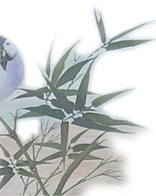|
Ti Hua Shi – Poem on Chinese Painting or Painting Poem
Ti Hua Shi usually refers to a poem on a Chinese painting. It is used to express the feelings, artistic opinion or the artistic conception of the author. Just as Fang Xun in Qing Dynasty said :“高情逸思,画之不足,题以发之” Gaoqing yisi, hua zhi bu zu, ti yi fa zhi – Noble feelings or surpassing thoughts cannot be fully expressed by a painting alone, write a poem to extend them.
A poem in calligraphy inscribed on a painting together with a stamp is a special characteristic of Chinese art. It is a unique style of Chinese painting and considered to be a unique aesthetic phenomenon in the world of art history. There are many excellent Ti Hua Shi and they are not only a valuable inheritance, but they are also important in the history of Chinese literature.
Before the Song Dynasty (960 -- 1279), poems that were not written on paintings, but praised paintings or expressed the poet’s feelings about some paintings could also be called Ti Hua Shi in the broad sense of the term.
There are two theories concerning the origin of Ti Hua Shi. One states that it started in the Wei (220-265),Jin (265 - 316), and Southern and Northern Dynasties (420-589), the other says it started in the Song Dynasty (960 - 1279).
Zheng Xie and the Eight Eccentrics of Yangzhou are acknowledged as being the best creators of Ti Hua Shi in the history of Chinese painting and poetry.
Traditional Ti Hua Shi were written on the blank part of a painting to help give the painting balance. Zheng Xie and the Eight Eccentrics of Yangzhou’s poems on their paintings developed this to a new phase.
As a representative of the Eight Eccentrics of Yangzhou, Zheng Xie did not only write poems all his paintings, but he also wrote his poems in a style combining calligraphy and painting together – using the four kinds of traditional Chinese calligraphy with his painting and poetry together. His calligraphy became a close part of his painting; his paintings were pictures and also poetry.
With the creative style of combining poetry, calligraphy, painting and stamp together perfectly, Zheng Xie and the Eight Eccentrics of Yangzhou extended the content of the traditional flower and bird painting, made literati painting more accessible to ordinary people, created a wonderful comprehensive art, and had great influence in their society and on later generations.
|

